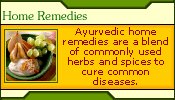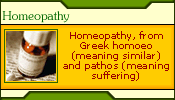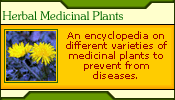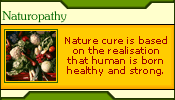|
There are few enzymes whose names have been established by long
usage such as ptyalin, pepsin, trypsin and erepsin. Apart from these,
enzymes are usually named by adding the suffixes to the main part
of the name of the substrate upon which they act. Thus amylases
act upon starch (amylum), lac- tase acts upon lactose, lipases act
upon lipids, maltase acts upon maltose and protesses act upon lipids,
maltase acts upon maltose and protesses act upon proteins. There
are, however, several enzymes which act upon many substances in
different ways. These enzymes are named by their functions rather
than substrates. Thus, an enzyme which causes deaminations is called
a deaminase and oxidising enzyme an oxidase.
Some enzymes work efficiently only if some other specific substance
is present in addition to substrate. This other substance is known
as an "activator" or a "conenzyme" . "Acti-
vators" are usually inorganic ions. They increase the activity
of a complete enzyme and may take part in the formation of the enzyme-substrate
complex. Many of the conenzymes are related to vitamins. This explains
why vitamin deficiencies profoundly alter metabolism. Thus, for
instance, thiamine, as thiamine pyrophosphate, functions as a conenzyme
in at least 14 enzymes systems. Conenzymes, like enzymes, are being
continuously regenerated in the cells.
Enzymes play a decisive role in the digestion of food as they are
responsible for the chemical changes which the food undergoes during
digestion. The chemical changes comprise the breaking up of the
large molecules of carbohydrates, fats and proteins into smaller
ones or conversion of complex substances into simple ones which
can be absorbed by the intestines. They also control the numerous
reactions by which these simple substances are utilized in the body
for building up new tissues and producing energy. The enzymes themselves
are not broken down or changed in the process. They remain as powerful
at the end of a reaction as they were at the beginning. Moreover,
very small amounts can convert large amounts of material. They are
thus true catalysts.
The process of digestion begins in the mouth. The saliva in the
moth, besides helping to masticate the food, carries an enzyme called
ptyalin which begins the chemical action of digestion. It initiates
the catabolism (breakdown) of carbohydrates by converting starches
into simple sugars. This explains the need for thorough mastication
of starchy food in the mouth. If this is not done the ptyalin cannot
carry out its functions as it is active in an alkaline, neutral
or slightly acid medium and is inactivated by the highly acid gastric
juices in the stomach.
Although enzymatic action starts while food is being chewed, digestion
moves into high gear only when the chewed food has passed the esophagus
and reached the stomach. While the physical action of peristalsis
churns and kneads solid food into a semi-solid amorphous mixture
called chyme, this mixture undergoes chemical changes initiated
by gastric juices secreted by the walls of the stomach. These juices
include mucus for lubricating the stomach, hydrochloric acid and
gastric juice. The enzyme or active principle of the gastric juice
is pepsin. This enzyme in combination with hydrochloric acid starts
the breakdown of proteins into absorbable amino acids called polypeptides.
An additional enzyme, rennin, plays an important role in the stomach
of the infant. It curdles milk and allows the pepsin to work upon
it. The gastric juice has no effect upon starches or fats.
When the chyme leaves the stomach and enters the small intestine
through the pylorus - the lower escape valve, it still contains
much food which is in the form of raw material not yet ready for
absorption in the body. Digestion is completed inside the small
intestine by several juices. From liver comes a liquid called bile
which converts fat globules into a smooth emulsion.
The pancreas contributes various enzymes which continue the breakdown
of proteins, help to divide starch into sugars and work with bile
in digesting fats. The small intestine itself secretes enzymes from
its inner wall to complete the reactions. When all the enzymes have
done their work, the food is digested and rendered fit for absorption
by the system.
Enzymes form part of the food we eat. Raw foods contain enzymes
in abundance ; cooking, pasteurising, pickling, smoking and other
processings denature enzymes. It is, therefore, essential to include
in our diet, substantial amount of raw foods in the form of fruits,
raw salads and sprouts. Studies have revealed that the body without
sufficient raw materials from raw foods, may tire and produce fewer
enzymes year after year. This may lead to wearing out of body processes
and consequent worn-out looks.
|


















